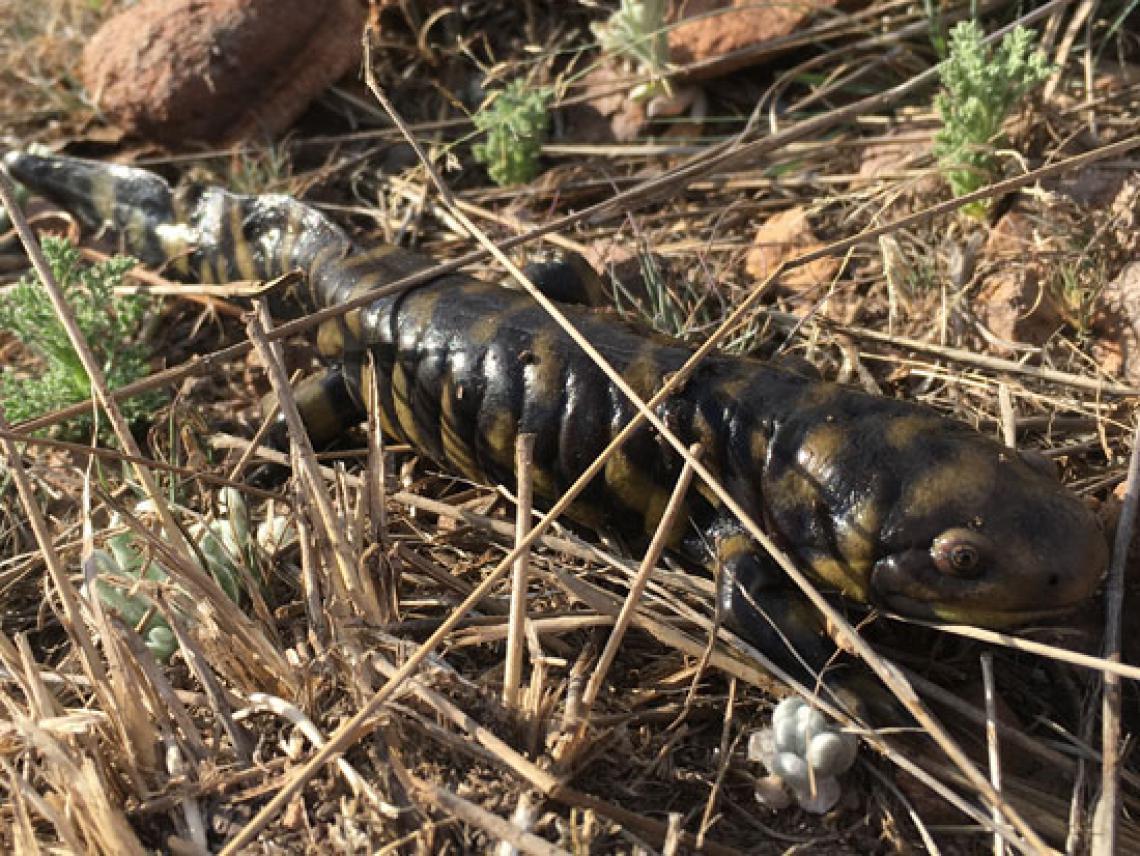Colin Brocka
Past Graduate Student
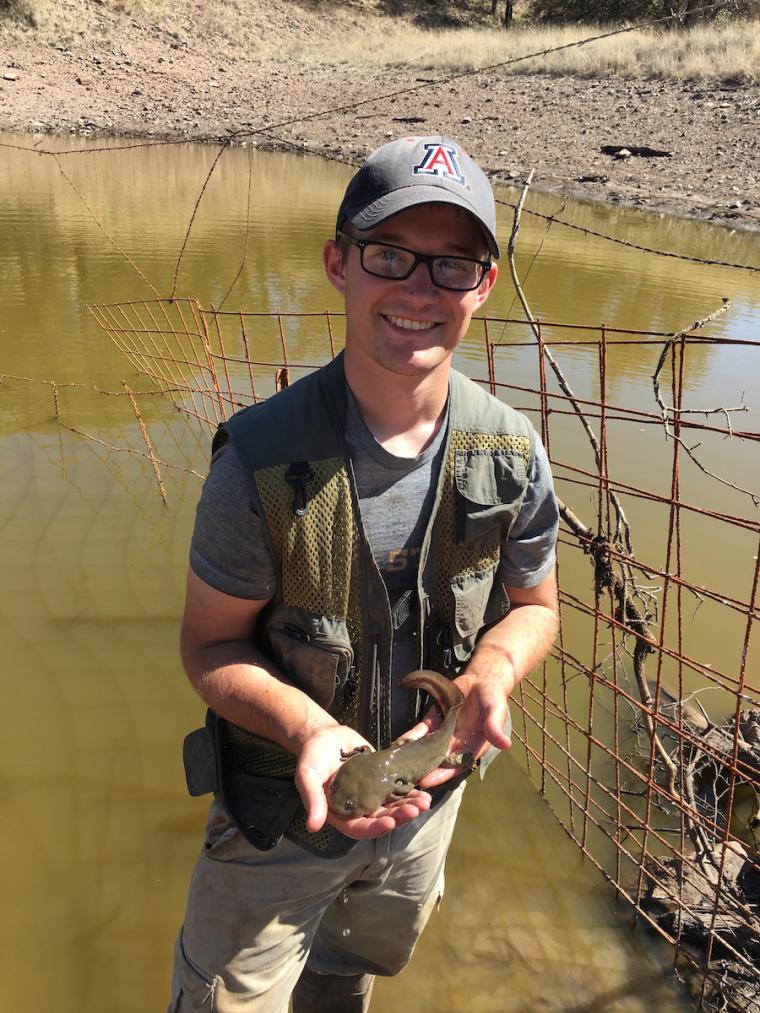
-
ENR2
1064 E. Lowell St.
Tucson, AZ 85721
The Sonoran tiger salamander (Ambystoma mavortium stebbinsi) is a subspecies of tiger salamander endemic to the San Rafael Valley (SRV) of southeastern Arizona. Historically, this species bred in naturally occurring ponds and springs, but arroyo cutting (the formation of deep, steep-sided, ravines by ephemeral waterways) and erosion in the area has caused most of the SRV to lose natural surface water. Cattle tanks created by ranchers have taken the place of natural springs and are now primary breeding sites for salamanders. Larvae can develop into either gilled aquatic adults called paedomorphs, undergo metamorphosis into terrestrial salamanders without gills. The subspecies was listed as endangered in 1997 due to its highly restricted distribution, dependence on human-constructed environments, breeding site invasion by non-native fish and/or bullfrogs, and risk of frequent die-offs due to disease.
Brocka_SRV.jpg
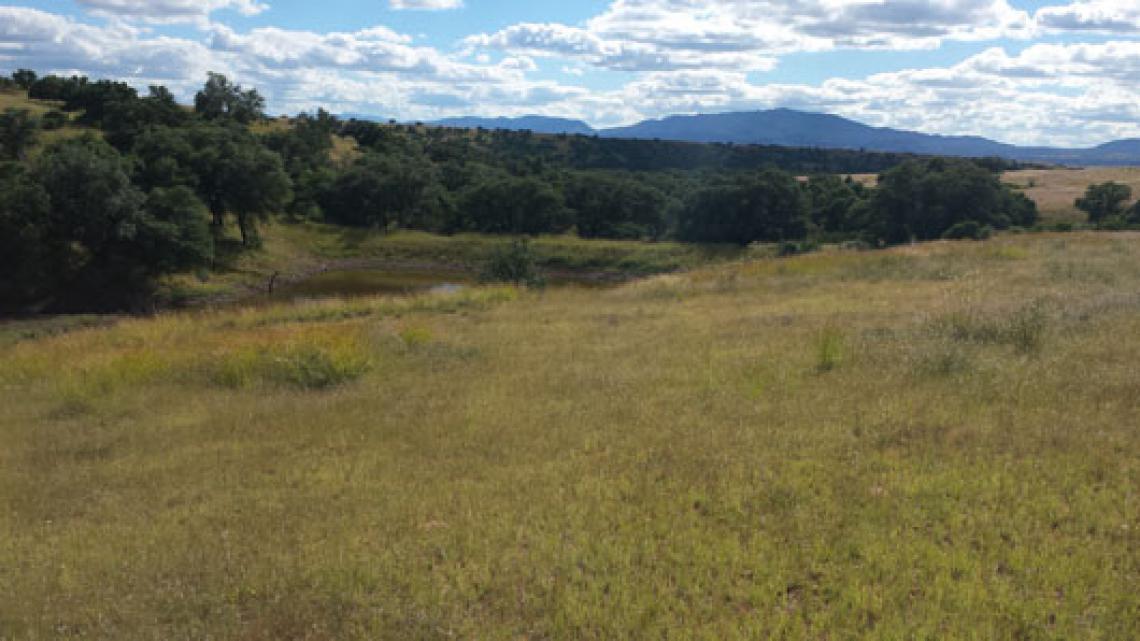
The ecology of Sonoran Tiger Salamanders outside of breeding ponds, and their dispersal patterns are largely unknown. The terrestrial metamorph is the only life stage capable of re-populating cattle tanks that lose salamanders due to drying or disease, and thus this stage is critical to conservation and maintenance of metapopulation dynamics. Through the use of radio-telemetry and habitat measurements, this study will provide information on the spatial ecology and life history of the terrestrial morph, and facilitate the development of well-informed management practices needed to conserve this species.
Major Questions:
1. How does the Sonoran tiger salamander move in its terrestrial habitat?
2. What habitat characteristics and refuge types do terrestrial Sonoran Tiger Salamanders use?
Terrestrial morph Sonoran tiger salamander
Brocka_CroppedSTS_resized.jpg
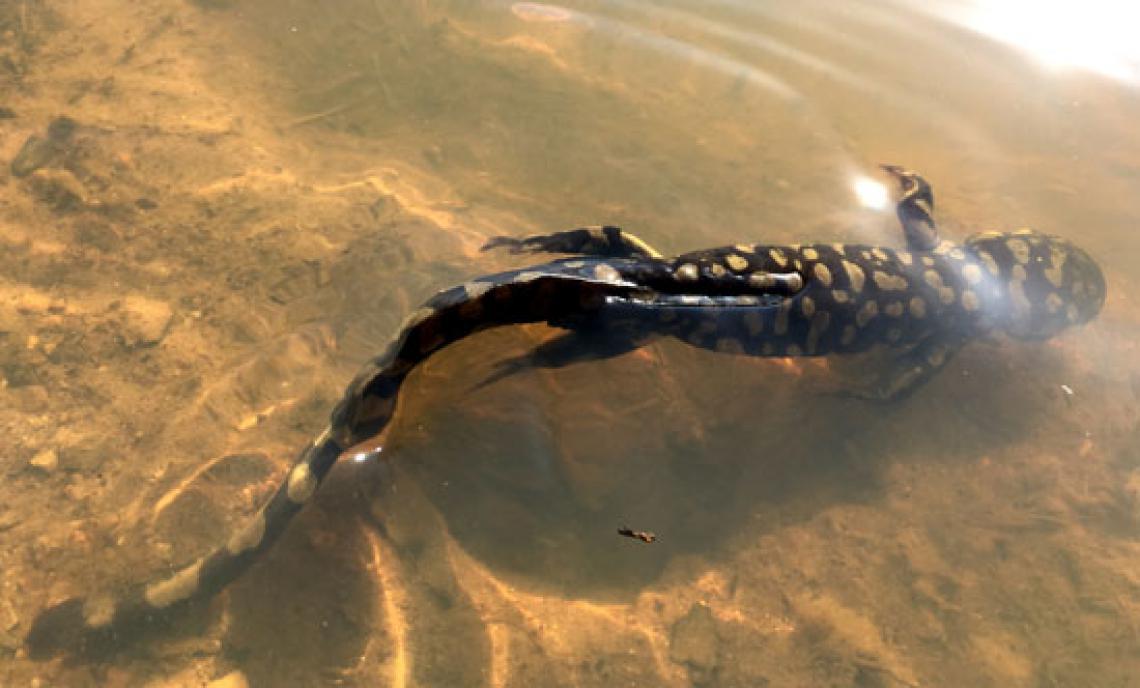
Aquatic morph Sonoran tiger salamander
aquaticmorph1_resize.jpg
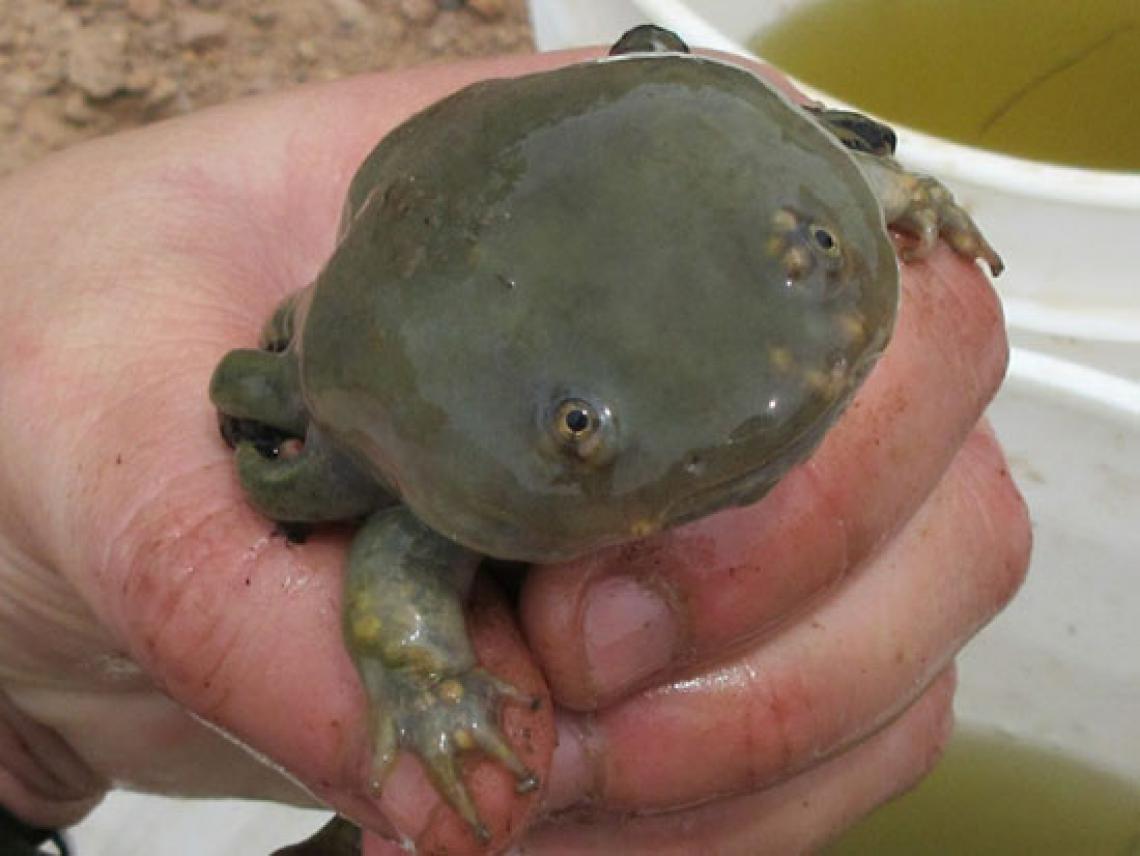
Terrestrial and aquatic morph comparison
Brocka_terrestrial_brachiate_compare_resize2.jpg
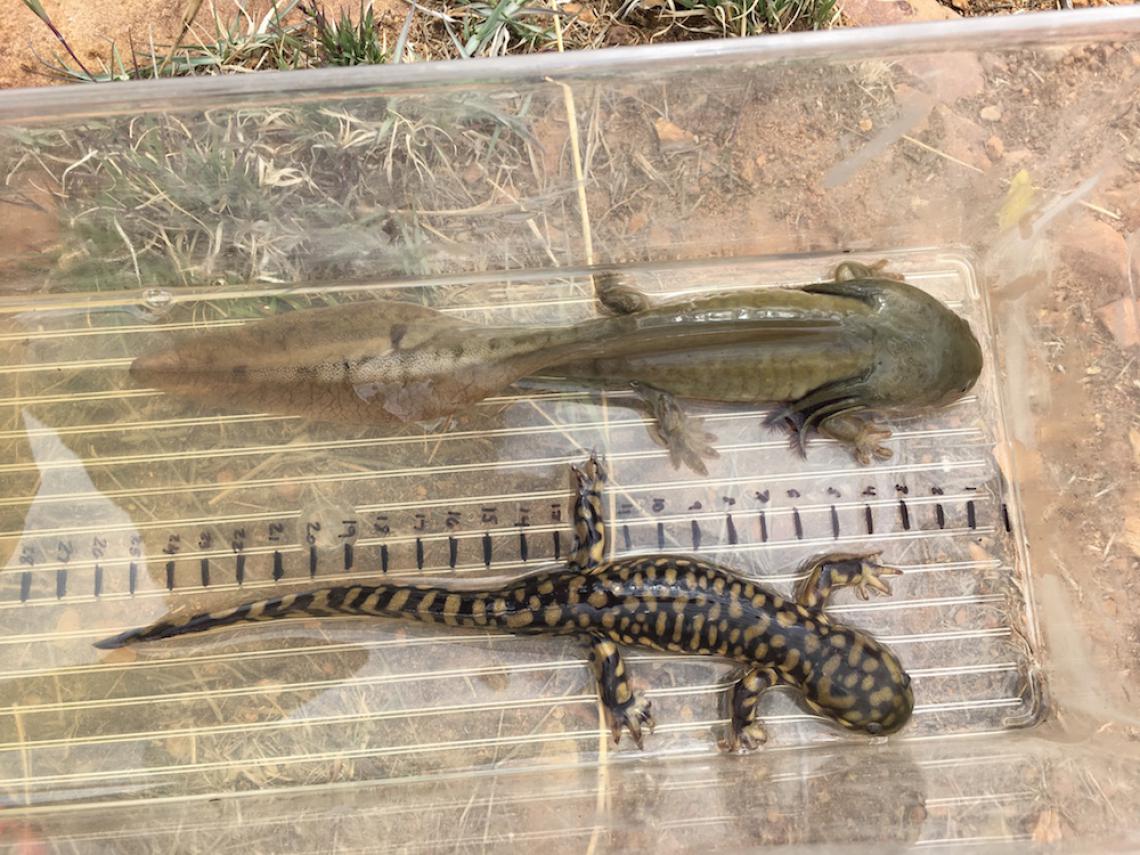
Terrestrial morph Sonoran tiger salamander
Brocka_terrestrial_closeup_resize.jpg
